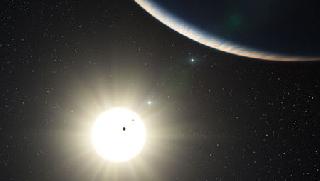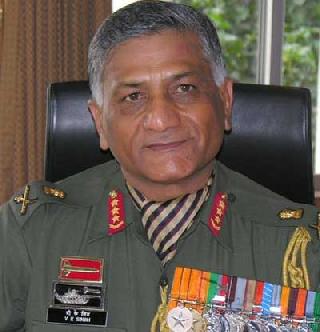
Up to seven planets orbiting a Sun-like star HD 10180.
SINGAPORE (BNS): ESO’s world-leading HARPS instrument has discovered a new planetary system containing at least five planets, and orbiting the Sun-like star HD 10180.
According to a study, the researchers have tantalising evidence that two other planets may be present, one of which would have the lowest mass ever found. This would make the system similar to our Solar System in terms of the number of planets (seven as compared to the Solar System’s eight planets).
Astronomers have found evidence that the distance of the planets from their star follows the similar pattern as of our Solar System.
A tiny back and forth motions of the star caused by the complex gravitational attractions from five or more planets were detected by astronomers. The five strongest signals correspond to planets with Neptune-like masses — between 13 and 25 Earth masses— which orbit the star with periods ranging from about 6 to 600 days. These planets are located between 0.06 and 1.4 times the Earth–Sun distance from their central star.
“We have found what is most likely the system with the most planets yet discovered,” ESO quoted Christophe Lovis, lead author of the paper reporting the result as saying.
The team of astronomers used the HARPS spectrograph, attached to ESO’s 3.6-metre telescope at La Silla, Chile, for a six-year-long study of the Sun-like star HD 10180, located 127 light-years away in the southern constellation of Hydrus (the Male Water Snake).
HARPS is an instrument with unrivalled measurement stability and great precision and is the world’s most successful exoplanet hunter.
The newly discovered system of planets around HD 10180 is unique in several respects. It has at least five Neptune-like planets lying within a distance equivalent to the orbit of Mars. The system is more populated than our Solar System in its inner region as it has many more massive planets there. The system probably has no Jupiter-like gas giant and all the planets seem to have almost circular orbits
 Previous Article
Previous Article Next Article
Next Article











The Indian Air Force, in its flight trials evaluation report submitted before the Defence Ministry l..
view articleAn insight into the Medium Multi-Role Combat Aircraft competition...
view articleSky enthusiasts can now spot the International Space Station (ISS) commanded by Indian-American astr..
view article